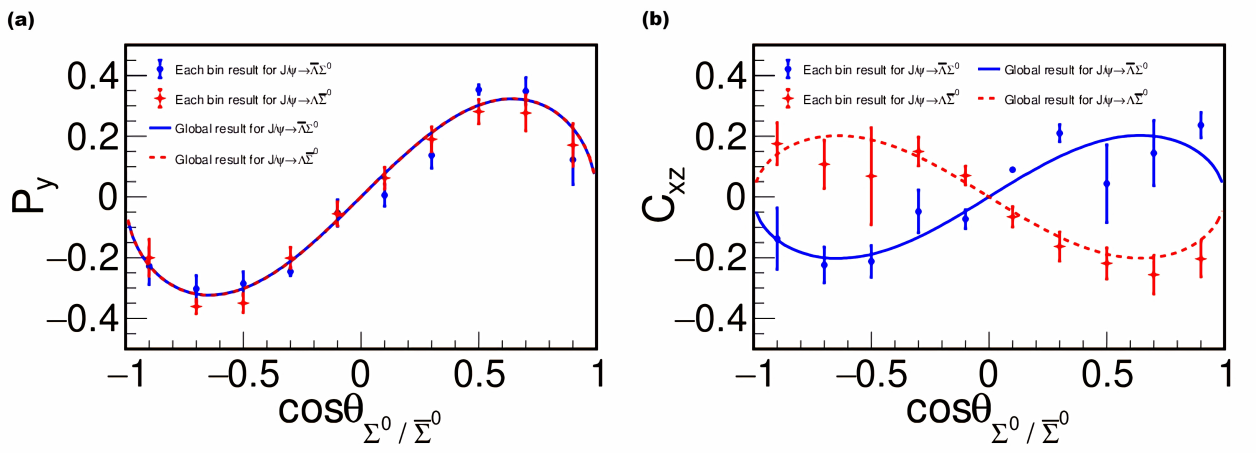

The BESIII collaboration recently reported a method useful for hyperon-antihyperon pairs of different types which exploits the cross section enhancement caused by the vacuum polarization at the J/ψ resonance, enabling a precise determination of the hyperon structure function. The result has been published in Nature Communications on October 11th, 2024 [Nat. Commun. 15, 8812 (2024)].
One of the fundamental goals of particle physics is to gain a microscopic understanding of the strong interaction. Electromagnetic form factors(GE and GM) describe the structure of hadrons in terms of charge and magnetization distributions. While the nucleon structure has been investigated extensively, data on hyperons are still scarce. It has recently been shown that electron-positron annihilations into hyperon-antihyperon pairs provide a powerful tool to investigate their inner structure. In light of this. The modulus and phase of the ratio GE/GM in time-like region can be directly accessed by measuring the polarization of one of the outgoing baryons orthogonal to the scattering plane. The ΛbarΣ0 transition is particularly interesting since it is the only ground-state transition for which data can be gathered in the high-energy time-like region. In particularly, e+e-→J/ψ→ΛbarΣ0 is a purely electromagnetic process mediated by γ*→ccbar(loop)→γ*, namely the hadronic vacuum polarization effect, which exhibits a notable enhancement attributed to the J/ψ resonance. By utilizing the available J/ψ events produced in e+e- annihilations at BESIII, researchers were able to investigate the form factors in the reaction e+e-→J/ψ →ΛbarΣ0 with polarized and spin-correlated ΛbarΣ0 pairs.
Using the available 10 billion J/ψ events produced in e+e- annihilations at BESIII, we investigate the form factors in the reaction e+e-→J/ψ→ΛbarΣ0 with the polarized and spin correlated ΛbarΣ0 pairs. With the hadronic vacuum polarization at the J/ψ resonance resulting in a significantly enhanced signal, we probe the same vertex as the one-photon exchange process and attain the structure at the J/ψ resonance. The result is essentially a precise snapshot of the ΛbarΣ0(ΛΣbar0) transition process, encoded in the transition form factor ratio and phase. Their values are measured to be R = 0.860 ± 0.029(stat.) ± 0.015(syst.), ΔΦΛbarΣ0=(1.011±0.094(stat.)±0.010(syst.))rad and ΔΦΛΣbar0=(2.128±0.094(stat.)±0.010(syst.))rad. Furthermore, charge-parity (CP) breaking is investigated in this reaction and found to be consistent with CP symmetry.

Fig. 1 Polarization in and spin correlations of thee+e-→J/ψ→ΛbarΣ0(ΛΣbar0) reaction
The Nature Communications publication: https://www.nature.com/articles/s41467-024-51802-y
arXiv: https://arxiv.org/abs/2309.04139